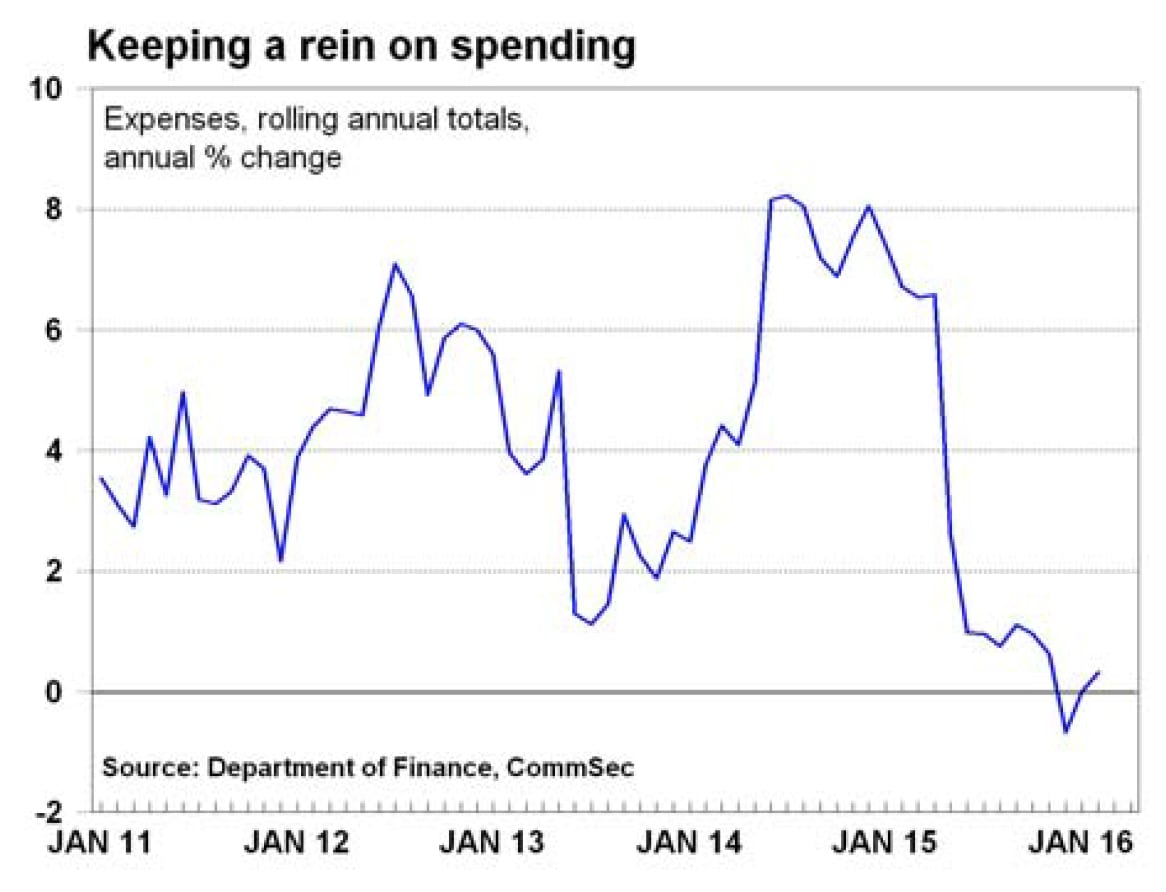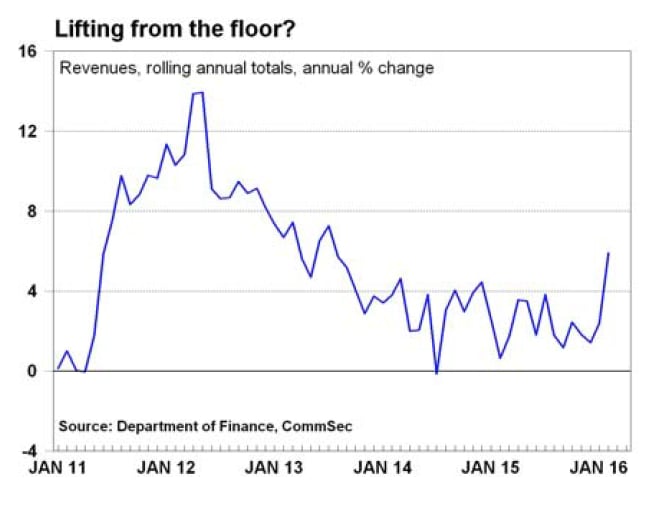Federal Budget is on track to meet forecasts: CommSec's Craig James
GUEST OBSERVER
The Department of Finance released the February monthly financial statements on March 24, just prior to the Easter holiday period. This note examines the latest data.
Budget improves: In the twelve months to February 2016, the budget deficit stood at $36.1 billion (around 2.2 percent of GDP), down from $44.7 billion in the year to January and the lowest rolling annual deficit in almost two years (since April 2014).
Lower-than-expected spending: The Department of Finance says the underlying deficit for February was $743 million lower than the ‘profile’ forecast and “primarily relates to lower than expected cash payments and net future fund earnings, partially offset by lower than expected cash receipts.”
The monthly Budget figures can provide insights on the broader economy and policy settings. If fiscal settings are tight, the Reserve Bank may allow easier monetary settings.
What does it all mean?
While figures can bounce around from month to month, all analytics suggest that the Federal Budget is on track to meet Government forecasts. Not only are rolling annual aggregates showing improvement, so are the so-called ‘profile’ positions estimated by the Department of Finance.
Revenue remains hard to come by with annual growth rates hovering around 2 percent. Meanwhile growth of expenses or spending is well contained, with expenses barely growing over the year. The Government was projecting a budget deficit near $37 billion and that expectation remains on target.
Looking ahead, if nominal annual growth of the economy continues to hold around 2-3 percent, then the current Government – and the next Government later this year – will find it increasingly difficult to keep spending static and thus chip away at the budget deficit. Aussies want spending maintained on schools, hospitals, defence and public services but at the same time aren’t keen to pay any more in tax. Same for all levels of Government. The hard decisions on tax will become increasingly more difficult the longer that the major parties put off reaching some form of agreement.
GST revenues continue to lift, but for state governments the difficulty – as it is for all businesses – is the absence of inflation to drive revenues.
What do the figures show?
The underlying budget deficit for the twelve months to February 2016 stood at $36.1 billion, down from $44.4 billion in the year to January. This was the lowest rolling annual deficit since April 2014.
Smoothed revenues (twelve months to December) were up 5.9 percent on a year ago, above the average growth of 2.6 percent over the past year. Expenses rose by 0.3 percent over the same period, down on the 1.7 percent growth over the past year.

The Department of Finance noted: “The underlying cash balance for the year to 29 February 2016 was a deficit of $38,719 million, compared to the 2015-16 Mid-Year Economic and Fiscal Outlook (MYEFO) profile deficit of $39,462 million. The difference of $743 million primarily relates to lower than expected cash payments and net future fund earnings, partially offset by lower than expected cash receipts.”

In terms of the fiscal balance, the Department of Finance noted: “The fiscal balance for the year to 29 February 2016 was a deficit of $35,292 million, compared to the MYEFO profile deficit of $36,719 million. The difference of $1,427 million primarily relates to lower than expected expenses, partially offset by lower than expected revenue.”
“Revenues: Total revenue was $1,223 million lower than the MYEFO profile, primarily due to lower than expected taxation revenue and dividend income.
Expenses: Total expenses were $2,831 million lower than the MYEFO profile, primarily due to lower than expected supply of goods and services, wages and salaries and grants expenses.”
The Government currently expects an underlying deficit of $37.4 billion for 2015/16 (around 2.3 percent of GDP).
Receipts from the Goods and Services Tax stood at $59.6 billion in the twelve months to February, up 7.0 percent on a year ago but affected by the one extra day in the month. The Government has forecast GST receipts of $59.79 billion for the entire 2015/16 year.
Actual GST receipts for the eight months to February stood at $41.367 billion, above the Budget ‘profile’ of $40.734 billion.
What is the importance of the economic data?
The Department of Finance releases the Government Financial Statements (Niemeyer Statement) almost every month. The statement allows investors to track the current budget position and provides insights into the effectiveness of fiscal policy.
What are the implications for interest rates and investors?
The Federal Budget is on track to meet forecasts. Spending restraint including low public service wage growth (similar trend in private sector) is driving the improvement. The Federal Government and Opposition parties will eventually have to agree on tax reform to address medium term challenges for the economy.
The Government is showing restraint on spending at present, but this is actually constraining stimulus to the economy.

Craig James is the chief economist at CommSec.
